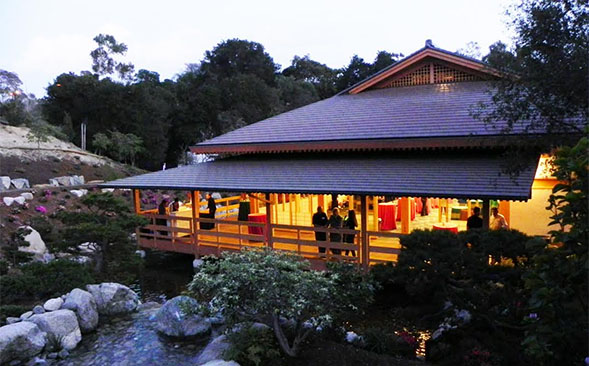Japanese Friendship Garden Pavilion Building Unveiled
An authentic Japanese building was designed by Kotaro Nakamura, interim director of SDSU's School of Art and Design.

The Japanese Friendship Garden in Balboa Park has undergone a major expansion in anticipation of this year's Balboa Park Centennial Celebration. Included in this expansion is a new Inamori Pavilion Building that was designed by Kotaro Nakamura, the interim director of the San Diego State University School of Art and Design.
The building was made possible by a donation from Kazuo Inamori, who is also the founder of the Kyocera Corporation and the International Kyoto Prize.
Nakamura’s vision
Surrounded by a koi pond, the building has been designed in authentic Japanese style called Sukiya and will serve as a multi-purpose room for lectures, exhibitions and weddings. It is a project Nakamura has taken great pride in.
“For the Japanese-American community in San Diego and the San Diego community at large, this will be there many years for people to enjoy and to create a friendship between the two countries,” Nakamura said. “It’s a very meaningful project for me and I was fortunate to be able to contribute to it.”
Nakamura grew up in Japan and came to the SDSU as a graduate student, before embarking on a 30-year career as an architect. Despite his experience, Nakamura explained that he spent a lot of time studying traditional Japanese architecture so he could design the building to be as authentic as possible.
“There are a lot of Japanese-looking buildings, but there are not too many authentic post and beam structures,” Nakamura said.
Authentic Japanese-style architecture
He ensured this building would be authentic by using Alaskan Yellow Cedar for the post and beams that support the structure. While the wood was more expensive, it is traditionally used in Japanese buildings because it is strong and can withstand the elements.
Originally, some people were concerned about the exposed wood looking aged over time, but Nakamura explained that was an important part of Japanese culture.
“Ageing is a part of the aesthetics in Japan,” Nakamura said. “It is a principle called “wabi-sabi” that means accepting the beauty of age and not going against natural order. The beauty is that we are a part of that time and life is not permanent; we are born and will die but this building will stand.”
More information
The Japanese Friendship Garden has been expanded to 11-acres and now also includes a 200 Cherry Tree Grove, a Tea and Herb Garden and a Children’s Garden. It is open seven days a week from 10 a.m. to 3:30 p.m.



